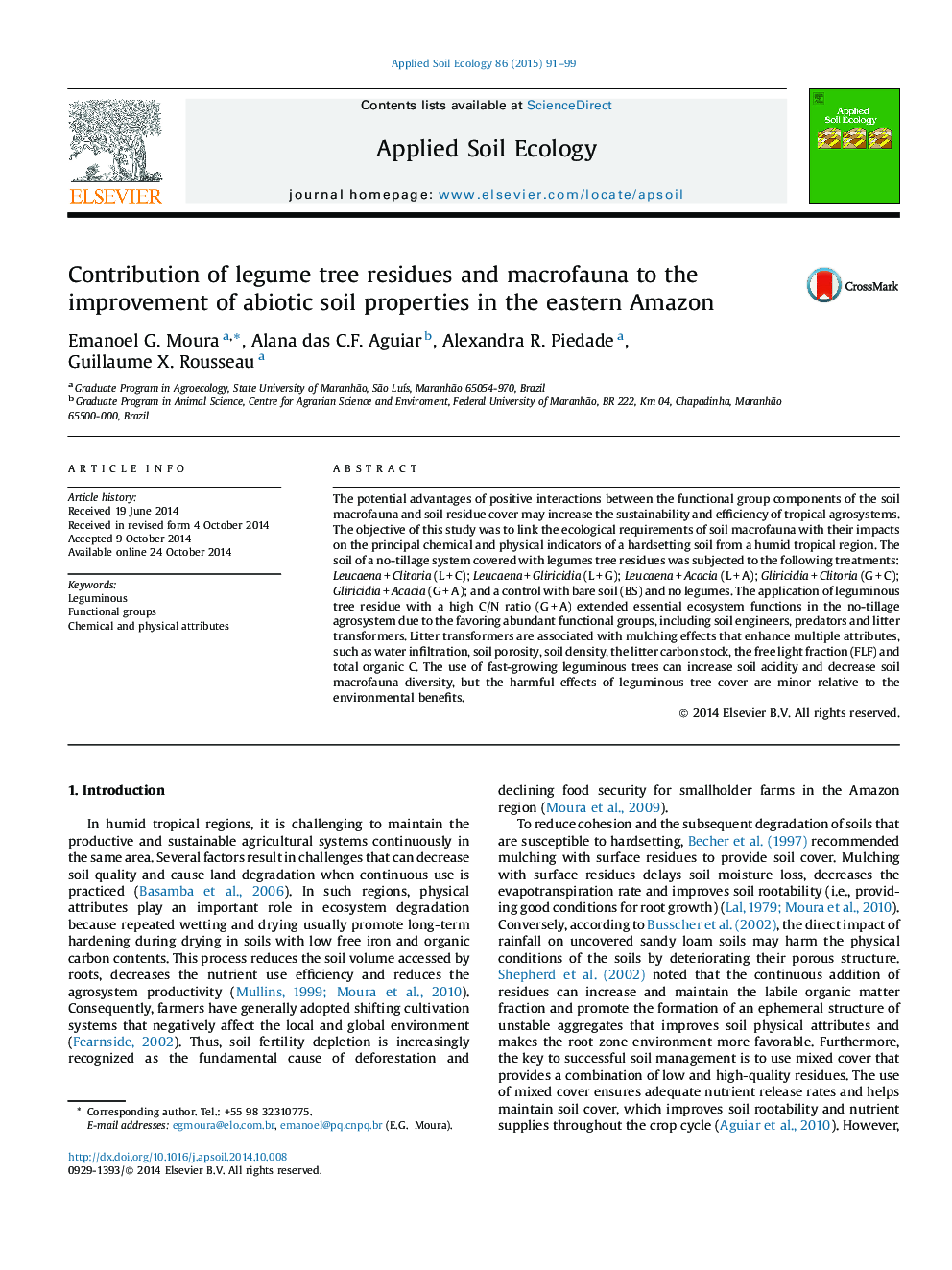| Article ID | Journal | Published Year | Pages | File Type |
|---|---|---|---|---|
| 4382095 | Applied Soil Ecology | 2015 | 9 Pages |
•Leguminous residue favors abundant soil engineers, predators and litter transformers.•Leguminous residue with a high C/N ratio extended essential ecosystem functions.•Soil macrofauna and soil residue cover may increase efficiency of tropical agrosystems.•Fast-growing leguminous plants can increase soil acidity and decrease soil macrofauna diversity.
The potential advantages of positive interactions between the functional group components of the soil macrofauna and soil residue cover may increase the sustainability and efficiency of tropical agrosystems. The objective of this study was to link the ecological requirements of soil macrofauna with their impacts on the principal chemical and physical indicators of a hardsetting soil from a humid tropical region. The soil of a no-tillage system covered with legumes tree residues was subjected to the following treatments: Leucaena + Clitoria (L + C); Leucaena + Gliricidia (L + G); Leucaena + Acacia (L + A); Gliricidia + Clitoria (G + C); Gliricidia + Acacia (G + A); and a control with bare soil (BS) and no legumes. The application of leguminous tree residue with a high C/N ratio (G + A) extended essential ecosystem functions in the no-tillage agrosystem due to the favoring abundant functional groups, including soil engineers, predators and litter transformers. Litter transformers are associated with mulching effects that enhance multiple attributes, such as water infiltration, soil porosity, soil density, the litter carbon stock, the free light fraction (FLF) and total organic C. The use of fast-growing leguminous trees can increase soil acidity and decrease soil macrofauna diversity, but the harmful effects of leguminous tree cover are minor relative to the environmental benefits.
